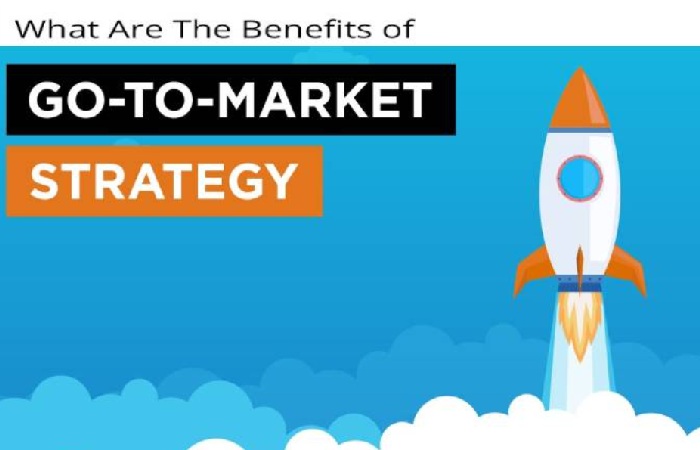Table of Contents
What is Go to Market?
The Go to Market is a potent commercial strategy, an action plan that aims to capture in detail the route through which the products pass in a company: production, transport, distribution points, points of sale, and finally when it reaches the shopper or buyer.
It would be the form, the intention with which the company addresses its potential market. It seeks to guarantee success and ensure that the correct strategy or path choose in each case.
Trying to sell with an Inbound Marketing strategy is not the same as using email marketing campaigns or Growth Hacking.
They all seek the same thing, sell, but do not use the same tools or strategies. It is essential to have a marked action plan for each one: the Go to Market.
What are the Benefits of the Go to Market Strategy?

The G2M strategies are not immediate but rather the whole approach that must give to them. It is determined as medium-long term strategies to obtain profitability and increase customer experience.
Therefore, even if it is redundant, the company must ensure that the product reaches the customer. Logical.
The difference is how you get there. Taking care of how it sells, marketing campaigns have to be innovative, emotional, promote corporate branding, distribution, and transport have to be effective.
It arrives within the established deadlines; the points of sale have to be monitored by companies. In the end, the buyer-seller interaction can be critical in the purchase decision.
the List of Benefits is Numerous:
- It dramatically increases the chances of a successful product launch.
- By studying the right way to launch a product, you avoid spending money on the wrong routes and only getting used to what looks like it will work based on the analysis.
- Reduces the time in which the sale achieve. By perfectly detailing all the elements that participate in the commercial process, everyone knows their function and when and how the product will reach their department; You can even speed up the process by knowing all your actual work.
- It ensures that the customer’s experience is impeccable. It is the most important thing to take care of it. Without a customer, there is no company.
- Having a G2M plan or strategy allows each professional to know what they have to do, clarifying the organization’s work, and knowing which organizations they should it if there are doubts.
- By seeking to enter new markets, it encourages innovation and product renewal.
- If you intend to train in these business growth strategies, do not hesitate to look at our Executive Program in Growth Strategies “About Growth.”
How many Areas Participate in the Go to Market (G2M)?
The Go to Market is fundamentally a commercial business strategy. However, the sales and marketing department participate, but other areas such as the R&D department (Research + Development), Supply Chain, Finance, or Human Resources.
But it is not left alone in the management and leadership of each department. Many professionals are involved: wholesalers, small businesses and sellers, distributors, and carriers; in online sales: marketing companies, advertising companies, or programmers to maintain servers and websites correctly.
Market Launch Strategy for a Product
In turn, it calls a market launch strategy because it includes all the elements that must consist of when bringing a product to market: sales, marketing, distribution, prices, promotions, development and communication of the corporate brand, competition analysis, and analysis of the perception that the client has about the company.
It affects the launch of new products and seeks to promote strengths or products or services.
It gets the most leads or reinforces the catalog by promoting products and services that the company considers quality but did not have the expected success in the initial launch.
And also, it creates the products that the client wants to buy. It is essential to know how the traditional sector has changed, for this, and if you’re going to create unique products, we recommend our Postgraduate in Digital Product Management.
Essential Objectives of a Go To Market strategy
The key objective, practically the aim of any company, is to improve business results. But how do you get it? Aligning the entity’s business and commercial strategy with the needs (changing and unexpected) of the clients.
One of the most frequent mistakes when making a product launch strategy is having what customers needed and looking for a long time (even if it was relatively recently).
Go To Market plans must anticipate and study both their past needs, such as those they may have, by analyzing market trends and forecasts.
It Establishes the Following Objectives:
- Make the public aware of the product offering.
- Attract new customers
- Snatch customers from the most vigorous competition and seek to reach new markets. It would be the case in which a critical multinational company produces a product.
- It may not be so much in its sector but to reach a new market niche and, above all, to snatch customers from a significant competitor.
- For example, Telepizza with its hamburger products or with desserts.
- You are always looking to decrease costs and sell more with less.
Building a Go to Market Strategy
The objectives of a go-to-market strategy include:
- They are creating awareness of a specific product or service.
- Generating leads and converting leads into customers.
- It is maximizing market share by entering new markets, increasing customer engagement, and outperforming competitors.
- She is protecting the current market share against competitors.
- They are strengthening brand positioning.
- Reducing costs and optimize profits.
Conclusion
Organizations can use a go-to-market strategy for various events, including launching new crops or facilities, introducing a current product to a new market, then level relaunching the company or brand.
The GTM strategy will help a business clarify why it’s launching the product, understand who the creation is for, and create a plan to involve the customer and convince them to buy the product or service.

